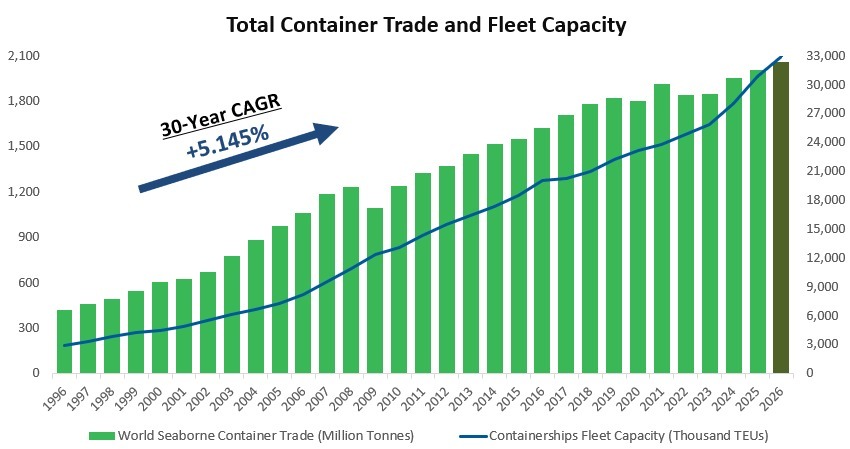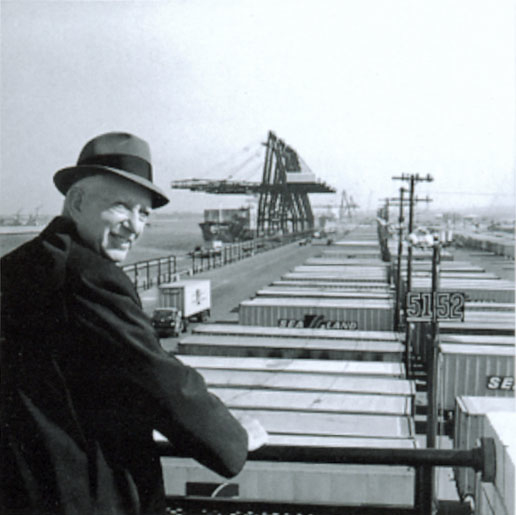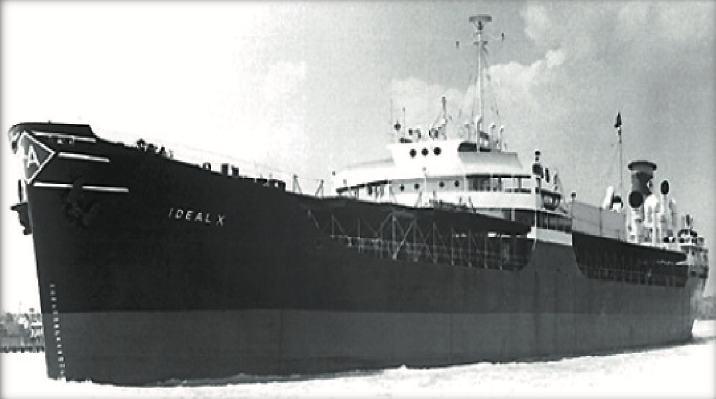A Pioneer of Container Ships
Malcom P. McLean (1913 – 2001) fundamentally transformed the liner business. He is attributed to being the pioneer of container ships.
The idea for shipping large cargo boxes came to him one day in 1937 in Hoboken, N.J., as he watched longshoremen loading and unloading goods. It dawned on him that sorting and packing goods into containers for shipment would make the process faster, safer and cheaper.
In the early 1950s, he had 1,776 trucks and thirty-seven transport terminals along the eastern seaboard, he had built the largest trucking fleet in the Southern States and the fifth-largest in the USA.
He finally went on to pursue his idea of containerizing cargo in 1955 when he sold his share of McLean Trucking and bought the Pan Atlantic Steamship Company of Mobile, Alabama.
In 1956, he developed the metal shipping container, which replaced the traditional break bulk method of handling dry goods and revolutionized the transport of goods and cargo worldwide.
On 26 April 1956, Malcolm McLean’s converted World War II tanker, the Ideal X, made its maiden voyage from Port Newark to Houston in the USA. It had a reinforced deck carrying 58 metal container boxes as well as 15,000 tons of bulk petroleum. By the time the container ship docked at the Port of Houston six days later the company, later became known as Sea- Land Service, was already taking orders to ship goods back to Port Newark in containers.
McLean was named “Man of the Century” by the International Maritime Hall of Fame.
Understanding Container Shipping
Container shipping companies operate scheduled or liner services, using owned or chartered vessels, aiming to attain an optimal frequency and utilization level. Major container shipping companies have been increasingly chartering-in a greater portion of their fleet from third party owners on competitive charters rather than purchasing vessels outright.
The type of vessel deployed on a certain route depends on the size and type of trade as well as the port infrastructure. Typically large vessels serve routes between major ports, while feeder vessels make connections between the major hub ports and regional ports.
The containers have standard dimensions and are made of steel. The standard measure of units are the TEU, 20-foot Equivalent Unit which represents a 20 foot long container, and the FEU, 40-foot Equivalent Unit which represents a 40 foot long container, both are typically 8.5 feet high and 8 feet wide. Specialized containers of all the sizes listed above exist: refrigerated containers are used for perishable goods and tank containers are used to carry liquids such as liquefied gases, spirits or chemicals.
The use of high cube FEUs has increased as shippers can transport more lightweight consumer goods in a single container at an overall lower cost.
Advantages of Container Shipping
Container shipping has been the driving force in globalization for the past 50 years. Its standardization has allowed for integration with the onshore transport systems and has lead to a great reduction of costs in international trade and increased its efficiency.
Advantages of container shipping compared with other shipping modes include: less cargo handling, efficient port turnaround, highly developed intermodal network and reduced shipping time.
Container shipping has a fundamental position in global trade; it is one of the fastest growing sectors in shipping, benefiting from a shift in cargo transport to unitization.
The growth of containerization over the past quarter century has been exponential.




